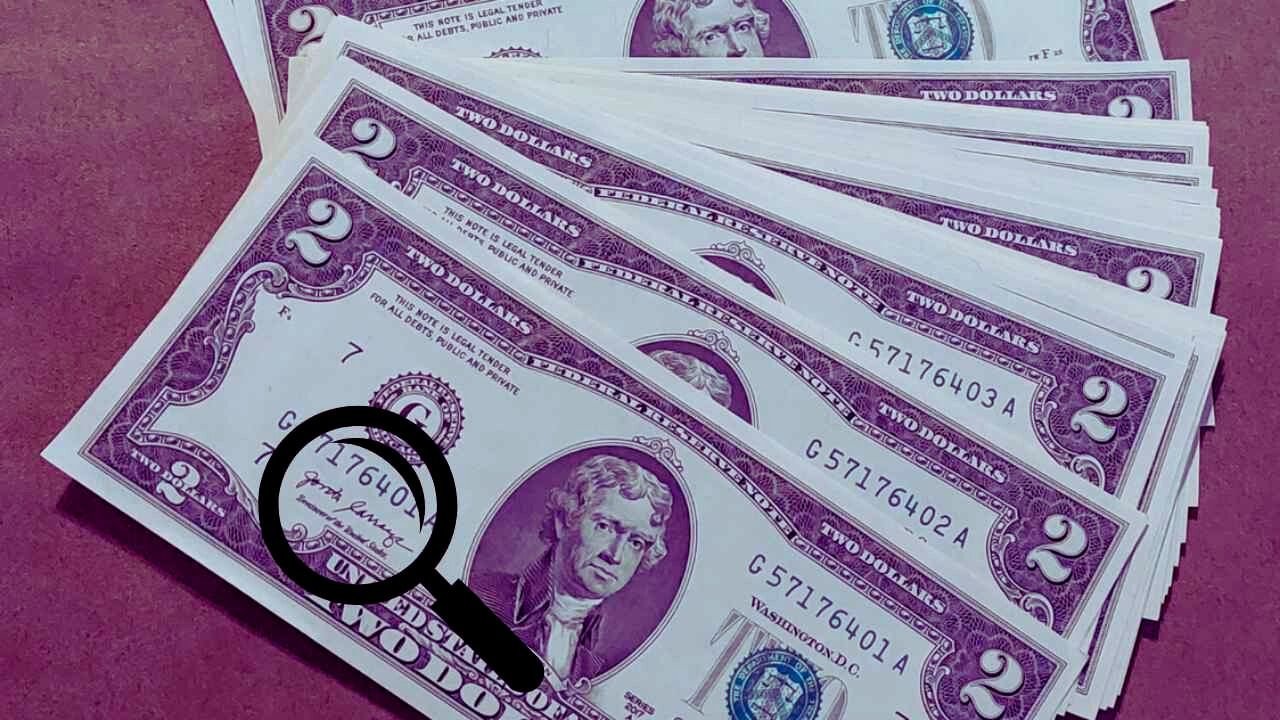A Special Bill for a Big Celebration
In 1976, the United States marked its 200th birthday with a unique $2 bill, known as the Bicentennial $2 bill. Featuring Thomas Jefferson on the front and a picture of the Declaration of Independence signing on the back, it was a one-of-a-kind design. Over 590 million were printed, so most are worth just $2. However, some rare ones with special serial numbers or printing mistakes can be worth thousands or even millions. Collectors are buzzing about these bills, and people are digging through old wallets and drawers to find a hidden gem.
What Makes These Bills So Valuable?
The value of a 1976 $2 bill depends on its condition, serial number, or errors. A “repeater” serial number, like 34343434, is highly prized and can sell for $12,000 to $88,000 or more in top condition. Other valuable types include low serial numbers (like 00000001), star notes with a star symbol, or bills with printing errors like double serial numbers. For example, a rare error bill sold for $35,250 at auction. Bills from certain Federal Reserve Banks, like Minneapolis (marked “I”), are also rarer and worth more.
How to Spot a Million-Dollar Bill
Checking your $2 bill is easy and could lead to a big payout. Look at the green serial number on the front for patterns like repeaters (56565656) or ladders (12345678). Check for a star at the end of the serial number, as these replacement notes are scarcer. Examine the bill’s condition—crisp, uncirculated bills with no folds or stains are worth more. Also, look for printing mistakes, like blurry ink or misaligned seals. If you spot something unusual, take it to a professional appraiser or grading service like PCGS or PMG to confirm its value.
Where to Sell Your Rare Bill
If you think you have a valuable 1976 $2 bill, don’t spend it. Auction houses like Heritage Auctions or online platforms like eBay are great places to sell, but stick to trusted buyers to avoid scams. A bill in good shape with a rare serial number could fetch hundreds or thousands. For example, a pristine star note from Kansas City might sell for $95, while a low serial number could go for $2,000. Getting your bill graded can boost its price, as collectors trust certified notes. The hunt for these bills is fueling excitement across the country.
A Piece of History Worth Hunting For
The 1976 $2 bill is more than money—it’s a snapshot of America’s 200th birthday. With the 250th anniversary approaching in 2026, interest in these bills is growing. Most are still worth just $2, but the rare ones with unique features are collector’s treasures. Stories of people finding valuable bills in old envelopes or piggy banks are inspiring others to check their own. So, grab that old $2 bill from your drawer and take a close look—you might be holding a fortune.
| Feature | Details |
|---|---|
| Serial Number Types | Repeater, Ladder, Low, Star Notes |
| Condition | Uncirculated preferred, no folds/stains |
| Errors | Double serial, misaligned seals |
| Value Range | $2 (circulated) to $88,000+ (rare) |
| Rare Federal Reserve | Minneapolis (“I”), Kansas City (“J”) |
FAQ
Are all 1976 $2 bills worth a lot?
No, most are worth $2 unless they have rare serial numbers, errors, or are uncirculated.
How do I check if my bill is rare?
Look for repeater or ladder serial numbers, star notes, or printing errors, and get it appraised.
Where can I sell a valuable bill?
Try Heritage Auctions, eBay, or local coin dealers, but only deal with trusted buyers.
Do star notes always mean more value?
Yes, star notes are rarer, but value depends on condition and the Federal Reserve Bank.
